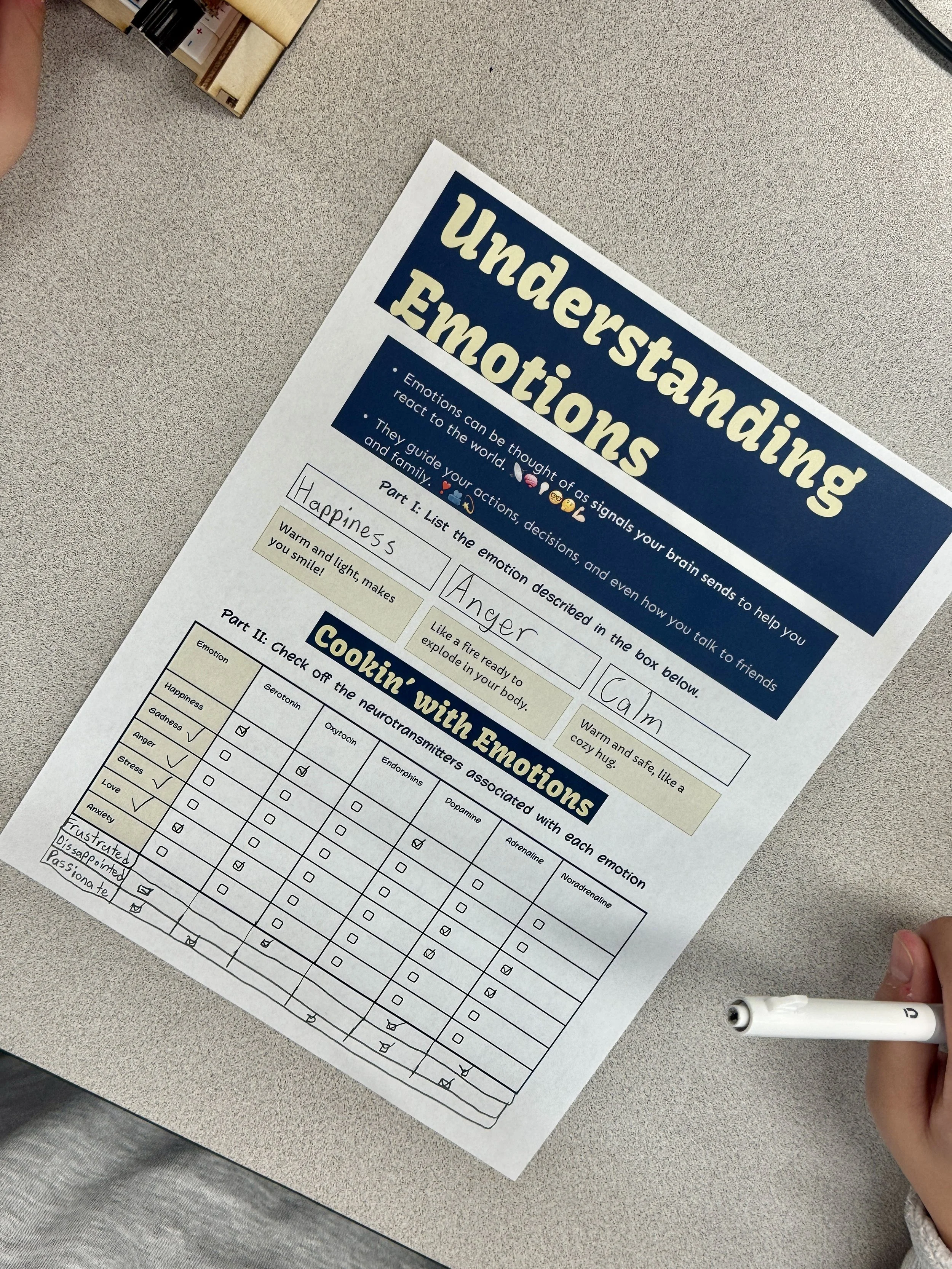Moodi
a Tamagotchi-inspired interactive learning game for middle schoolers to explore the chemistry of emotions.
Client
Allergic to Salad
Tools
Arduino, Adobe Illustrator
Collaborators
Ana Shuleva, Cass Scheirer, Minh Nguyen, Kam Waugh
Role
Design, research, & curriculum development
How might we…
help middle schoolers better conceptualize and regulate emotions?
Project Overview
Moodi is an interactive, tangible learning tool designed for middle school students (grades 6-8, ages 11-13) to explore the intersection of emotions, neuroscience, and STEAM concepts. The project employs hands-on activities and storytelling to teach students about neurotransmitters, emotional regulation, and how emotions connect to real-life experiences. Moodi is extremely innovative in that it allows learners to conceptualize and visualize concepts that are generally very abstract — such a chemical combinations and neurotransmitter activity in the brain.
Two Distinct Game Play Options
Discover Mode: Discover mode allows learners to do just what it says — discover new emotions! As students turn the knobs, they are able to manipulate neurotransmitter levels, which are represented by the LED lights. When users are close to discovering an emotion, the lights will change from red to yellow, before finally turning green once learners have found the correct chemical combination. The LCD screen guides the user — telling them if they are close to, or have already discovered an emotion.
Play Mode: In play mode, students are tasked with creating the correct chemical combination for a specific emotion. Moodi tells students what emotion it is experiencing, and they have to manipulate the dials to create the correct chemical ratio.
Learning Objectives
Recognize and describe emotions and their triggers.
Identify neurotransmitters associated with emotional states.
Create neurotransmitter combinations to evoke specific emotions.
Apply neuroscience knowledge to real-life contexts.
Skills Developed
Foundational STEAM and neuroscience knowledge.
Emotional literacy and vocabulary expansion.
Emotional regulation tactics.
Collaboration and leadership through group activities.
Learning Theories Leveraged
Three-Phase Lesson Plan
-
Students identify five core emotions (happy, stressed, loving, sad, angry) and learn their triggers.
0.1 Discovery of Emotions
-
Students explore key neurotransmitters (dopamine, serotonin, oxytocin, etc.) and their roles in emotional states.
0.2 Introduction to Neurotransmitters
-
Through worksheets and multimedia, students analyze emotional contexts and neurotransmitter activity in various scenarios.
0.3 Connecting to Real-World Examples
Assessment and Flexibility
Moodi includes formative assessments (e.g., graphic organizers, discussion template for teachers) and summative options (quizzes, presentations). The project is adaptable for different age groups and instructor expertise, ensuring broad applicability across varying educational contexts.
Iteration, Testing, and Next Steps
Moodi has undergone many iterative phases, from an early prototype made out of cardboard and paper — to the more developed product that it is today. Design iterations were driven by testing and feedback sessions with students and educators. Moodi is currently still being developed, researched, and revised, as the team hopes to produce a GTM prototype. Below, you can find photos of the process — including sketches, early stage forms, testing sessions, supporting materials and more advanced prototypes.














